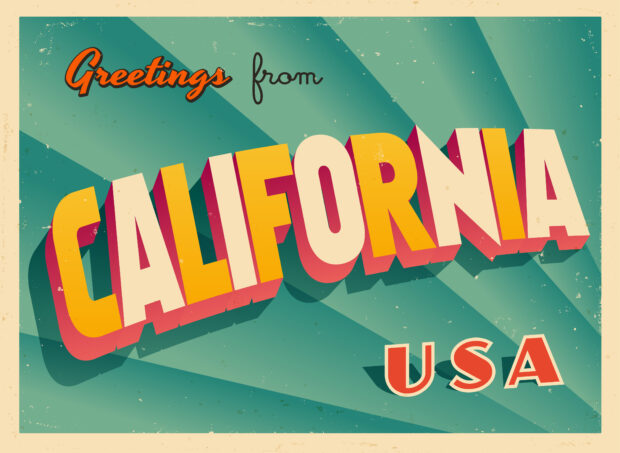At a recent California Department of Insurance virtual public hearing, stakeholders were invited to weigh in on a regulatory proposal spelling out commitments insurers have to make in exchange for permission to use catastrophe models in ratemaking.
Related article: Sorry, Wrong ZIP Code: California Regulatory Reforms Move Forward
But there wasn’t much debate on the review and oversight of the actual cat models that will be used. Those topics that were covered at an earlier hearing in April.
Still, a few speakers wandered back to issues of model transparency and applicability in spite of the more limited scope of the June 27 hearing.
In fact, the first commenter at the hearing, Carl Sussman, an insurance broker who hosts a syndicated talk radio show focused on California consumers and insurance, led off the session with praise for the intent of the regulation—to fix a “marketplace currently in shambles” with catastrophe modeling that “provides detailed risk assessments based on historical data, scientific principles and advanced analytics, which all combined is the best of the best.”
Bracing other listeners for the expression of contrary views, Sussman invited everyone hearing him to “take an imaginary shot glass” and hold it up anytime they heard someone use the phrase “black box underwriting”—a term that speakers at earlier hearings used to warn against the lack of transparency about how models work. “If you actually take the time and read the text of the proposed regulations, as I have, you’ll see that every single solitary bit of information that an insurance company utilizes in underwriting and ratemaking, including any modeling…must be provided to the Department of Insurance and the Insurance Commissioner…..
“We elect an insurance commissioner who does get access to all of that data and all of that modeling, and they’re going to look out for us,” he said. “We don’t know the formula for Coca-Cola. Coke doesn’t have to tell the public what the formula is. We have the FDA, people who do have the formula who are tasked with being sure we aren’t drinking poison, arguably. This is how it’s done,” he asserted.
In fact, there wasn’t much discussion of the oversight of models, a topic that was covered at an earlier hearing in April. Balber was the only speaker to use the exact phrase “black box underwriting” this time around, and she said that neither the public nor CDI has access to the workings of private models, advocating the creation of a public wildfire to solve the problem.
Michael DeLong, speaking on behalf of the Consumer Federation of America and its member groups, also urged CDI to start working on the creation of a public model at last week’s hearing. He also said CFA is doubtful that models will make California’s market better. “In March 2023, CFA did a study of uninsured homes in America. We found that 6.1 million homeowners lacked insurance, about $1.6 trillion in market value, and the highest levels of uninsured homes were in Detroit, Houston, and Miami, all of which are in states where insurers use catastrophe models and pass-through reinsurance.”
The only modeler representative to speak last week was Bryan Rehor, director of regulatory affairs for ZestyAI, who distinguished between property-specific wildfire risk models like ZestyAI’s Z-FIRE model and traditional stochastic models which he said is suited for portfolio risk assessment. For both types, he stressed, “the review of these models, along with the complete rate application must be streamlined and expedited to restore availability to the California market. Given the complexity that will be introduced into the rate review process, we recommend CDI implement an emergency procedure to begin reviewing models under the new process immediately rather than simultaneously with rate filings.”
Related article: “California Wildfires Dwindle as Premiums Surge“
Speed of implementation was on the minds of other speakers too. “I’d be remiss if I didn’t that there’s a high degree of concern regarding the ability to accomplish the ambitious goals of the Sustainable Insurance Strategy without more certainty and expediency in the rate filing process,” said Seren Taylor, speaking on behalf of the National Association of Mutual Insurance Companies and Personal Insurance Federation of California. Taylor referred to the insurance groups’ support of a trailer bill introduced by California Governor Gavin Newsom in May to speed up rate filing approval timelines.
Related article: New Language in California Budget Seeks to Expedite Insurance Rate Filing





















 Lemonade: 700K Customers on the Car Waitlist
Lemonade: 700K Customers on the Car Waitlist  Early CSU Hurricane Season Forecast Calls for ‘Above-Average’ Activity
Early CSU Hurricane Season Forecast Calls for ‘Above-Average’ Activity  Insurance Industry Contemplates Knock-On Effect of Tariffs to Claims, Consumers
Insurance Industry Contemplates Knock-On Effect of Tariffs to Claims, Consumers  Allstate: How Can You Save on Auto Insurance?
Allstate: How Can You Save on Auto Insurance? 






